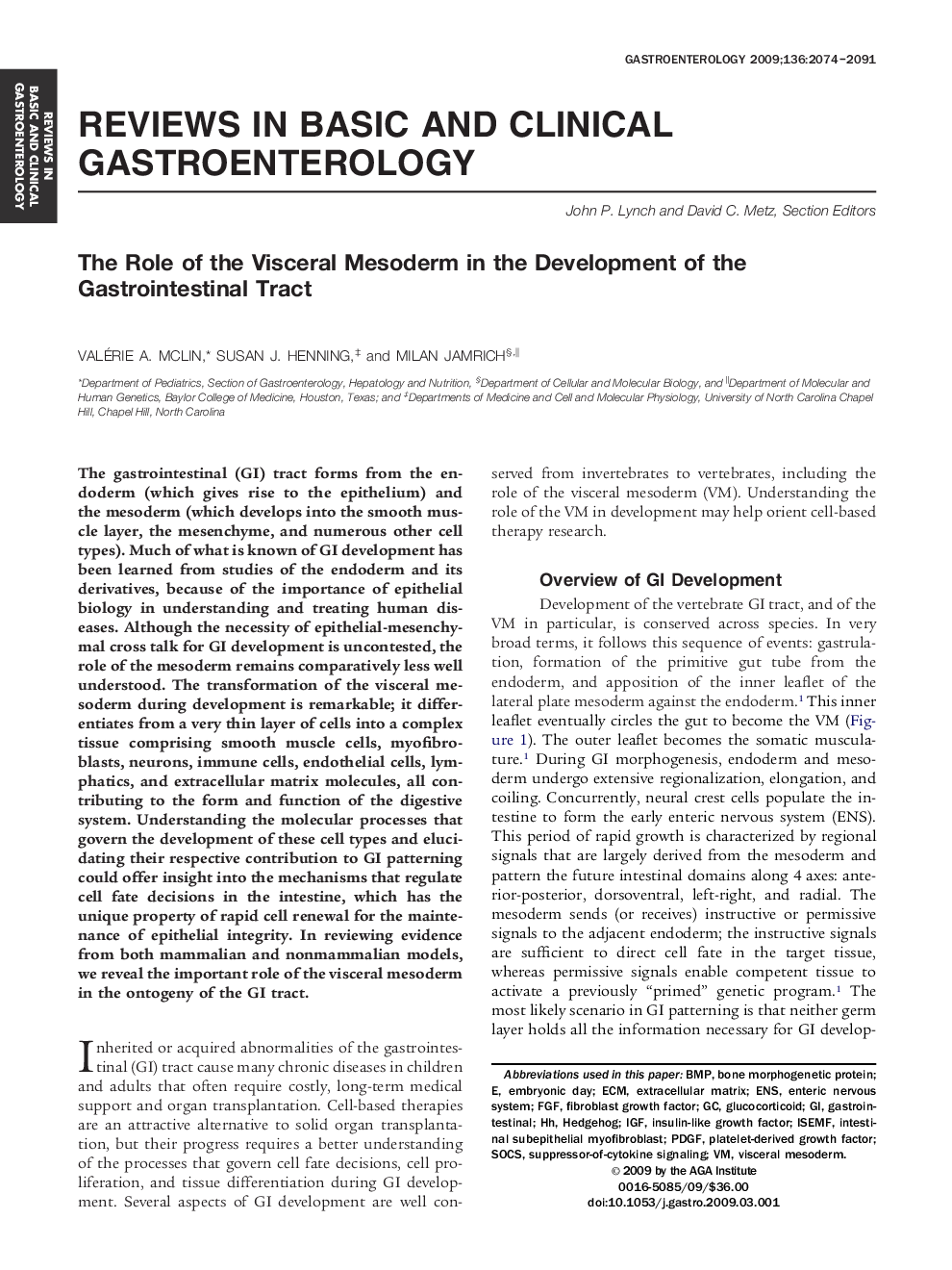| Article ID | Journal | Published Year | Pages | File Type |
|---|---|---|---|---|
| 3297311 | Gastroenterology | 2009 | 18 Pages |
The gastrointestinal (GI) tract forms from the endoderm (which gives rise to the epithelium) and the mesoderm (which develops into the smooth muscle layer, the mesenchyme, and numerous other cell types). Much of what is known of GI development has been learned from studies of the endoderm and its derivatives, because of the importance of epithelial biology in understanding and treating human diseases. Although the necessity of epithelial-mesenchymal cross talk for GI development is uncontested, the role of the mesoderm remains comparatively less well understood. The transformation of the visceral mesoderm during development is remarkable; it differentiates from a very thin layer of cells into a complex tissue comprising smooth muscle cells, myofibroblasts, neurons, immune cells, endothelial cells, lymphatics, and extracellular matrix molecules, all contributing to the form and function of the digestive system. Understanding the molecular processes that govern the development of these cell types and elucidating their respective contribution to GI patterning could offer insight into the mechanisms that regulate cell fate decisions in the intestine, which has the unique property of rapid cell renewal for the maintenance of epithelial integrity. In reviewing evidence from both mammalian and nonmammalian models, we reveal the important role of the visceral mesoderm in the ontogeny of the GI tract.
